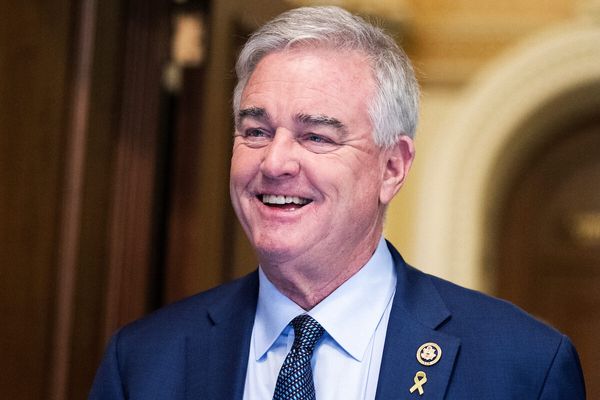
Over three weeks in, the federal government shutdown is closing in on the longest shutdown in history, catching up to the 34-day run of December 2019.
The shutdown is affecting some sectors more than others, including real estate, defense, and airline travel. The latter particularly stands out as travel consumers face longer security lines, reduced air traffic control staffing, and more delayed flights.
“Undoubtedly, the shutdown is having an effect,” said Sharon Amos, director and aviation specialist at Air Ambulance 1 in Houston, Tx. “Flight delays and cancellations are increasingly frequent as a result of the FAA and air traffic controllers operating at lower capacity. In addition to having an impact on flight schedules, this raises airline expenses because of staffing shortages and longer security lineups.”
Free Trial: Turn Chaos Into Trading Profits
While others panic over Middle East tensions and oil spikes, Matt's Inner Circle members position for volatility profits. 35-year Wall Street veteran shares exact strategies that thrive during uncertain times. Start Your Free 7-Day Trial
Airline stocks have underperformed, particularly during the shutdown stretch, with the benchmark U.S. Global Jets ETF (NYSE:JETS) down 6.16% over the past 30 days.
“The shutdown basically grinds to a halt FAA inspections, certification, and hiring,” said Paul Holmes, senior analyst at BrokerListings.com in New York City. “This ends up putting a massive strain on air traffic control and TSA staffing. Domestic routes are most affected in situations like this. It’s delays, cancellations, and a knock to traveler confidence that will put a dent in companies’ revenue and margins.”
Still, there’s no reason leverage-minded investors can’t find opportunities in the airline sector, at a time when many sector stocks are in a shutdown-induced decline. To maximize opportunity, experts point to these ‘buy the dip’ opportunities in the airline industry.
Delta Airlines
Delta Airlines (NYSE:DAL) shares are down almost 3% in the past week, but its long-term prospects are rising. The company recently reported full-year earnings-per-share guidance of $5.25 to $6.25, with an ample cash flow outlook of $3 to $4 billion. In general, analysts seem optimistic about the stock, with multiple ‘strong buys’ across the board.
Among the 21 airline analysts tracking the sector, 19 have issued a strong buy this month (with one additional ‘buy’ rating). Additionally, DAL is deemed well-positioned in the U.S. market and, with a robust brand, should shake the rust off when the shutdown ends.
“I like Delta right now,” Holmes said. “That’s because they’re so strong internationally, so there’s less dependence on US routes that are impacted by a government shutdown. They also have decent loyalty programs, which should work to cushion against temporary shocks.”
Toss in an average analyst target price range of between $70-and-$74 per share (DAL is trading at $59 per share), and Delta offers some abundant upside to airline investors.
American Airlines
American Airlines (NASDAQ:AAL), trading at about $13 per share, is another good airline play, even as its share price is down 26.7% year to date. While the shutdown does amplify short-term risk for AAL, as it does for all U.S. airlines affected by the shutdown, the airliner is likely undervalued given the expected boost in air travel demand around the holiday season and into 2026, according to the Air Transport Association. JP Morgan, for example, recently hiked its price target from $17 to $20 per share.
American isn’t exactly a sterling blue chip these days, but it’s still an active dip play that could be deeper than other airlines’, thus making an expected bounce-back much higher.
Southwest Airlines
Southwest Airlines (NYSE:LUV) is down almost 5% over the past week amid challenges posed by the government shutdown. Southwest should be a lower downside-risk play, as it’s the largest U.S. airline by passenger count and operates an all-Boeing 737 fleet of 800 aircraft. Investors should also be okay with modest upside on the stock, as LUV is widely considered to be a more conservative choice, so you may not garner significant gains.
“Southwest is another enticing one because it has low debt and a strong balance sheet,” Holmes noted. “This makes it a quality airliner to hold through a cycle like this because it should be relatively insulated to setbacks.”
Playing The Dip Game Correctly
Airline investors should monitor key risks before making aggressive bets. Focus primarily on progress (or lack thereof) on the government shutdown, along with fuel prices, labor cost trends, travel demand indicators such as TSA performance, and corporate travel trends, even during the shutdown.
It’s also a good idea to establish a time horizon when venturing into airline stocks. “Typically, buying the dip” in airlines typically plays out over 6–18 months due to operational and economic issues, so don’t treat this strategy like a day trade.
“The key things investors should know are that airlines are extremely capital-intensive, cyclical, and very vulnerable to various input costs, especially fuel, labor, and changes to government policy, and we’re living through a particularly eventful administration,” Holmes said.
It’s the carriers with efficient fleets, a diversified set of routes, and strong liquidity that are the most likely to stay in the air during disruptions. “Those would be my three north stars when evaluating airline stocks right now,” Holms added.
Editorial content from our expert contributors is intended to be information for the general public and not individualized investment advice. Editors/contributors are presenting their individual opinions and strategies, which are neither expressly nor impliedly approved or endorsed by Benzinga.
Photo: Shutterstock







